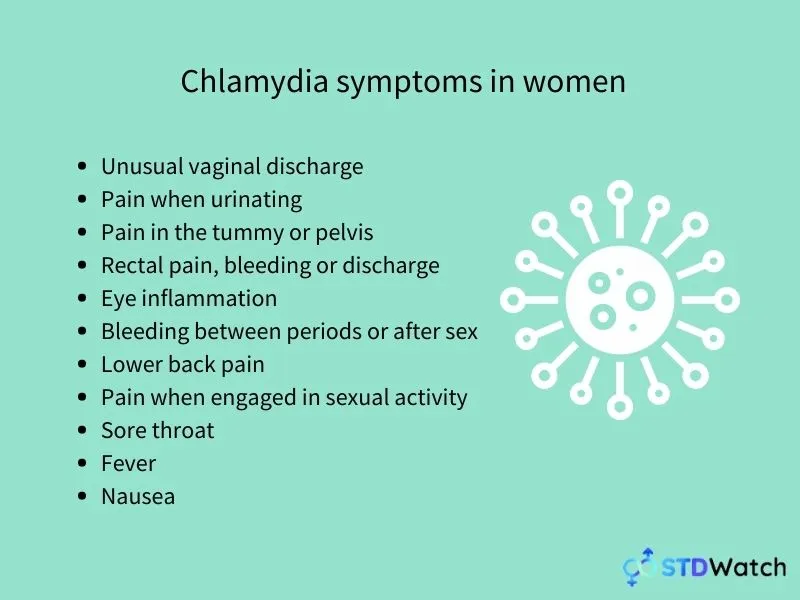Chlamydia - Everything You Need to Know
- Written by Tommy Gonzales on May 21, 2020.
- Medically reviewed by Dr. Andrea Pinto Lopez and republished in August 2021.

Chlamydia is very common STD that, according to the CDC, it is the most frequently reported STD in the United States with approximately 1.7 million reports of infection annually.[1]
Alarmingly, any individuals remain unaware of this infection as it’s symptoms may often present only mildly, or not at all. Considering the long-term effect of this STD, it’s important to get tested, even if you only suspect you were exposed to it.
What type of long-term damage can chlamydia cause?
Untreated, chlamydia can lead to a host of major consequences to your health, including PID (pelvic inflammatory disease), which can have a devastating effect of fertility over long periods of time as well as increased susceptibility to HIV/AIDS.[2]
Men are also at a high risk of the chlamydia infection spreading to other areas of the penis, testicles and prostate, causing major pain and inflammation.
Over time, men are also at risk of suffering from infertility due to untreated Chlamydia.[3]
Can chlamydia be cured?
Yes. The good news is that with a healthy dose of a specific type of antibiotics as azithromycin or doxycycline, chlamydia infections can be cured with relative ease.
Keep in mind that you’ll have to abstain from sexual activity for a period of 7 days, and if you want to avoid being infected again, you’ll have to make sure your partner is also being treated.
If you are pregnant, receiving treatment for chlamydia usually will prevent the transmission of the disease to your child during birth.
It’s advised to retest yourself approximately 3-4 weeks after treatment in order to ensure you haven’t been re-infected. [4] This is recommended because many people experience a chlamydia reinfection within the first few months after receiving treatment.
Chlamydia symptoms
Chlamydia presents itself a bit differently in men and women, but in both cases can lead to alarming long-term effects.
The symptoms below are displayed from most common to least common, in a descending order.
Chlamydia symptoms in women
- Minimal or no symptoms (~70% of cases)
- Yellowish, foul smelling vaginal discharge
- Pain when urinating
- Pain in the lower abdomen and/or pelvis
- Rectal pain, bleeding or discharge
- Eye inflammation
- Bleeding between periods or after sex
- Lower back pain
- Painful intercourse and bleeding after sex
- Sore throat (in cases of pharyngeal chlamydia)
- Fever
- Nausea [5]
Chlamydia symptoms in men
- Minimal or no symptoms (~50% of cases)
- Unusual discharge from the penis (White, cloudy or watery discharge)
- Pain when urinating
- Rectal pain, bleeding or discharge
- Eye inflammation
- Burning/Itching sensation near or at the tip (opening) of the penis
- Testicular swelling and pain
- Sore throat [6]

Read: What is chlamydia? Plus causes and signs
Annual chlamydia testing
- All women 25 years old and younger who have sex
- Women older than 25 with risk factors (a new sex partner you have known for less than six months or multiple sex partners)
- All pregnant women
- Men who have sex with men (MSM) [7]
Stop having sex immediately and see a doctor if you have any of the following genital symptoms:
-
Discharge or burning during urination
-
An unusual sore or rash
Chlamydia testing
The most commonly-used form of testing for Chlamydia is a process called NAAT (nucleic acid amplification).
This type of testing has the ability to detect genetic traces associated with Chlamydia through a process of “amplifying” the presence of the bacteria’s genetic material. In most cases, this type of testing will require a urine sample.
Chlamydia can also be tested with a sample of bodily fluids from a few key locations, including the eye, throat, rectum, cervix or urethra.
This type of analysis gives your sample an opportunity to infect a group of healthy cells. If infection occurs, your result is positive, and vice versa. In most cases, tests that utilize NAAT techniques are given priority thanks to their accuracy and ease of administration.[8]
Read: How does an at home chlamydia test work?
Important things to remember about sample collection
When providing a urine sample for chlamydia testing, make sure you haven’t urinated for at least one hour prior to collecting the sample.
Furthermore, you are advised to avoid wiping or cleaning your genitals prior to collecting your sample and ensuring that you collect the initial stream of urine in your sample.
Understanding chlamydia test results
Your Chlamydia test results will include one of the following: “normal” or “abnormal”. “Normal” means that a Chlamydia infection hasn’t been detected in your sample.
If you are suffering from symptoms that continue to present themselves, you may require a different type of test. It’s important to note that some STDs share remarkably-similar symptoms with other STDs, so keep that in mind.
An “Abnormal” or positive result means that your sample has included genetic material associated with Chlamydia, or immune system antigens designed to combat Chlamydia. The next step is to consult a doctor on further treatment.[9]
Should you get tested for chlamydia?
Higher-risk behavior includes engaging in sexual activity with multiple partners, drug use and practicing sexual activities with any person which haven’t received a negative result from a test, as being involved in previous sexual activities.
If you suspect that you may have been infected with Chlamydia, testing is the way to go.
Considering the harsh outcomes of leaving a chlamydia infection untreated, as well as the ease and price of today’s testing options, there’s absolutely no reason to remain in the dark.
Read: Chlamydia treatment | How does a chlamydia test work?
Chlamydia and gonorrhea
Two infections that you can get from having sex with another person are called chlamydia and gonorrhea.
They are caused by bacteria that are passed from your sexual partner to you. It is common to have chlamydia and gonorrhea at the same time.
Chlamydia and gonorrhea can also grow in the rectum and rarely in the mouth, throat, or eyes.
Chlamydia statistics
In 2018, a total of 1,758,668 chlamydia infections were reported to CDC in the US.
During 2017–2018, the rate increased 2.9%, from 524.6 to 539.9 cases per 100,000 population.
Written by Tommy Gonzales on March 11, 2020. Updated and republished in June 2021.

